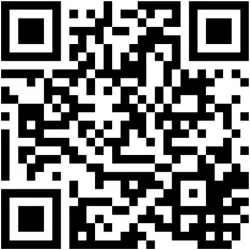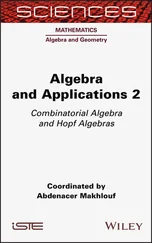Fundamentals of Terahertz Devices and Applications
Здесь есть возможность читать онлайн «Fundamentals of Terahertz Devices and Applications» — ознакомительный отрывок электронной книги совершенно бесплатно, а после прочтения отрывка купить полную версию. В некоторых случаях можно слушать аудио, скачать через торрент в формате fb2 и присутствует краткое содержание. Жанр: unrecognised, на английском языке. Описание произведения, (предисловие) а так же отзывы посетителей доступны на портале библиотеки ЛибКат.
- Название:Fundamentals of Terahertz Devices and Applications
- Автор:
- Жанр:
- Год:неизвестен
- ISBN:нет данных
- Рейтинг книги:4 / 5. Голосов: 1
-
Избранное:Добавить в избранное
- Отзывы:
-
Ваша оценка:
- 80
- 1
- 2
- 3
- 4
- 5
Fundamentals of Terahertz Devices and Applications: краткое содержание, описание и аннотация
Предлагаем к чтению аннотацию, описание, краткое содержание или предисловие (зависит от того, что написал сам автор книги «Fundamentals of Terahertz Devices and Applications»). Если вы не нашли необходимую информацию о книге — напишите в комментариях, мы постараемся отыскать её.
Fundamentals of Terahertz Devices and Applications
Fundamentals of Terahertz Devices and Applications — читать онлайн ознакомительный отрывок
Ниже представлен текст книги, разбитый по страницам. Система сохранения места последней прочитанной страницы, позволяет с удобством читать онлайн бесплатно книгу «Fundamentals of Terahertz Devices and Applications», без необходимости каждый раз заново искать на чём Вы остановились. Поставьте закладку, и сможете в любой момент перейти на страницу, на которой закончили чтение.
Интервал:
Закладка:
Cover Design: Wiley
Cover Image: © Comstock/Getty Images,
© kertlis/Getty Images
To my wonderful wife Vasso, children Spyro, Georges, Despina‐Ifigenia and their families who embraced me with love, support and understanding and offered me happiness and proudness throughout the years .
About the Editor
Dimitris Pavlidishas been a Professor in Electrical Engineering and Computer Science at the University of Michigan (UofM) from 1986 to 2004 and a Founding Member of UofM's first of its kind NASA THz Center in 1988. He served as a Program Director in Electronics, Photonics, and Magnetic Devices (EPMD) at the National Science Foundation and at present is a Research Professor at Florida International University. He received the decoration of “Palmes Académiques” in the order of Chevalier by the French Ministry of Education and Distinguished Educator Award of the IEEE/MTT‐S and is an IEEE Life Fellow.
List of Contributors
Maria Alonso-delPino Jet Propulsion Laboratory, California Institute of Technology, Pasadena CA, USA and Department of Microelectronics Technical University of Delft Delft, The Netherlands
Naznin Akter Department of Electrical and Computer Engineering Florida International University Miami, USA
Masahiro Asada Institute of Innovative Research Tokyo Institute of Technology Tokyo, Japan
Darwin Blanco Department of Microelectronics Technical University of Delft Delft, The Netherlands
Elliott R. Brown Departments of Physics and Electrical Engineering Wright State University Dayton, USA
Guillermo Carpintero del Barrio Departamento Teoría de la Señal y Comunicaciones Universidad Carlos III de Madrid Madrid, Spain
Guillaume Ducournau Univ. Lille, CNRS, Centrale Lille, Univ. Polytechnique Hauts-de-France, UMR 8520 Institute of Electronics, Microelectronics and Nanotechnology (IEMN) Villeneuve d’Ascq Cedex, France
B. Globisch Department of Physics Technische Universität Berlin Berlin, Germany and Fraunhofer Institute for Telecommunications Heinrich Hertz Institute Berlin, Germany
Mona Jarrahi Department of Electrical and Computer Engineering University of California Los Angeles, USA
Chong Jin ams AG,Premstätten, Austria
Wojciech Knap CENTERA Laboratories IHPP-Polish Academy of Sciences Warsaw, Polandand Laboratoire Charles Coulomb, CNRS & Université de Montpellier Montpellier, France
Jean-François Lampin Univ. Lille, CNRS, Centrale Lille, Univ. Polytechnique Hauts-de-France, UMR 8520 Institute of Electronics, Microelectronics and Nanotechnology (IEMN) Villeneuve d’Ascq Cedex, France
Nuria Llombart Juan Department of Microelectronics Technical University of Delft Delft, The Netherlands
Alain Maestrini Jet Propulsion Laboratory California Institute of Technology Pasadena, USA
Imran Mehdi Jet Propulsion Laboratory (JPL) Pasadena, USA
Tadao Nagatsuma Graduate School of Engineering Science Osaka University, Toyonaka Osaka, Japan
Roberto Paiella Department of Electrical and Computer Engineering and Photonics Center Boston University Boston, USA
Nezih Pala Department of Electrical and Computer Engineering Florida International University Miami, USA
Dimitris Pavlidis College of Engineering and Computing Department of Electrical and Computer Engineering Florida International University Miami, USA
Emilien Peytavit Univ. Lille, CNRS, Centrale Lille, Univ. Polytechnique Hauts-de-France UMR 8520 Institute of Electronics, Microelectronics and Nanotechnology (IEMN) Villeneuve dÂ’Ascq Cedex, France
A. Rivera Departamento Teoría de la Señal y Comunicaciones Universidad Carlos III de Madrid Madrid, Spain
Daniel Segovia-Vargas Departamento Teoría de la Señal y Comunicaciones Universidad Carlos III de Madrid Madrid, Spain
Berardi Sensale-Rodriguez Department of Electrical and Computer Engineering The University of Utah,Salt Lake City, USA
Michael Shur Electrical, Computer, and Systems Engineering Department & Physics, Applied Physics and Astronomy Rensselaer Polytechnic Institute New York, USA
Jose V. Siles Jet Propulsion Laboratory California Institute of Technology Pasadena, USA
A. Steiger Working Group 7.34 Terahertz Radiometry Physikalisch‐Technische Bundesanstalt Berlin, Germany
Safumi Suzuki Department of Electrical and Electronic Engineering, Tokyo Institute of Technology, Tokyo, Japan
About the Companion Website
This book is accompanied by a companion website:
https://www.wiley.com/go/Pavlidis/FundamentalsofTHz
The website includes:
Solutions to the Exercises

1 Introduction to THz Technologies
Dimitris Pavlidis
College of Engineering and Computing, Department of Electrical and Computer Engineering, Florida International University, Miami, FL, USA
Understanding the fundamentals of Terahertz devices and applications requires thorough consideration of passive and active components together with system perspectives. In terms of passive components, antennas are a key element for signal handling, while signal generation and detection can be achieved by various means such as photoconductive (PC) devices, photomixers, plasmonic PC devices, and duantum cascade lasers (QCLs). In addition to these approaches are based on optical concepts, electronic approaches are also explored and implemented. These include advanced devices using two‐dimensional (2D) layer technology, plasma field‐effect transistor detectors, diode multipliers, and resonant‐tunneling diodes (RTDs). THz systems combine such passive and active devices for responding to various application needs such as communication and sensing.
System operation at THz frequencies requires signal generation, emission, propagation, and reception. A key element for such systems is antennas that are discussed in Chapter 2. To fulfill the resolution or sensitivity requirements of most submillimeter‐wave instruments, especially very high gain reflector‐based antennas are necessary. These are illuminated by antenna feeds integrated with the transceiver/receiver front‐ends and based on horns or silicon lens antennas. Horn antennas are easily connected to a waveguide‐based front‐ends and can be easily manufactured while presenting good radiation properties. Lenses can on the other hand be easily integrated with bolometer detectors and silicon‐based font‐ends. They are often used to couple to direct detectors instruments and used in planar form with superconducting‐insulator‐superconducting (SIS) and hot‐electron bolometric (HEB) mixers as well as in PC systems on bow‐tie and logarithmic spiral form.
New THz antenna arrays based on horns and lenses benefited from advances in photolithography and micromachining to respond to the needs of multi‐pixel systems operating at submillimeter wave‐bands. Another important point for successful THz system operation is the reduction of transmission losses which can be high in metals. To overcome this difficulty, superconducting‐based microstrip lines can be used and employed in phased arrays. A disadvantage of this approach is the need for cryogenic cooling for operation which makes it impractical. Of major importance is the good understanding of the operation of integrated lens antennas and the way one can analyze them. Consideration of this type will be presented together with detailed discussions on elliptical lens and semi‐hemispherical lens antennas, excitation of shallow lenses by leaky‐wave/Fabry–Perot feeds, and fly‐eye antenna arrays.
Читать дальшеИнтервал:
Закладка:
Похожие книги на «Fundamentals of Terahertz Devices and Applications»
Представляем Вашему вниманию похожие книги на «Fundamentals of Terahertz Devices and Applications» списком для выбора. Мы отобрали схожую по названию и смыслу литературу в надежде предоставить читателям больше вариантов отыскать новые, интересные, ещё непрочитанные произведения.
Обсуждение, отзывы о книге «Fundamentals of Terahertz Devices and Applications» и просто собственные мнения читателей. Оставьте ваши комментарии, напишите, что Вы думаете о произведении, его смысле или главных героях. Укажите что конкретно понравилось, а что нет, и почему Вы так считаете.












